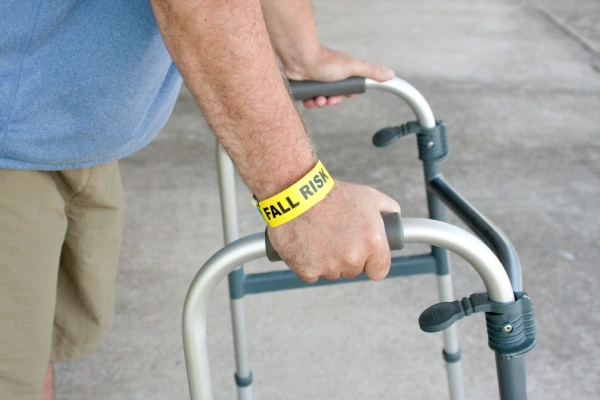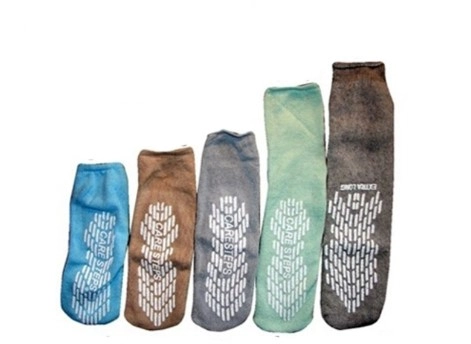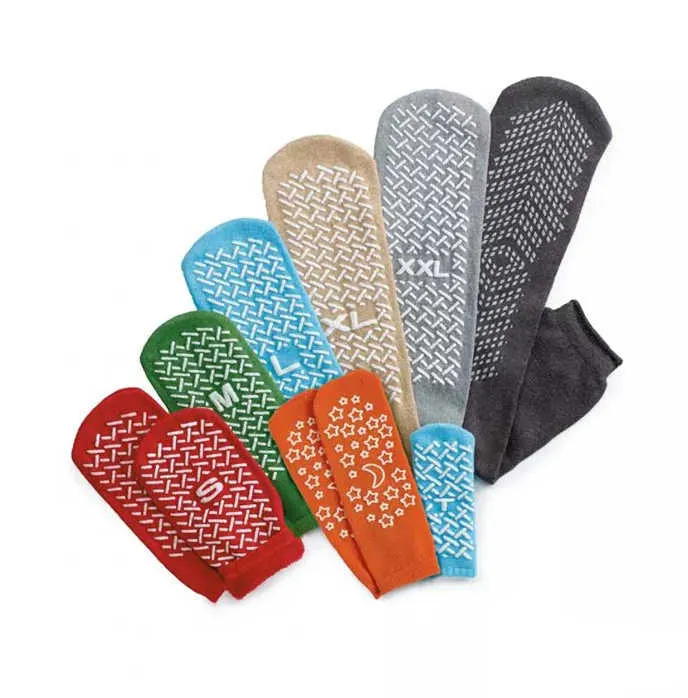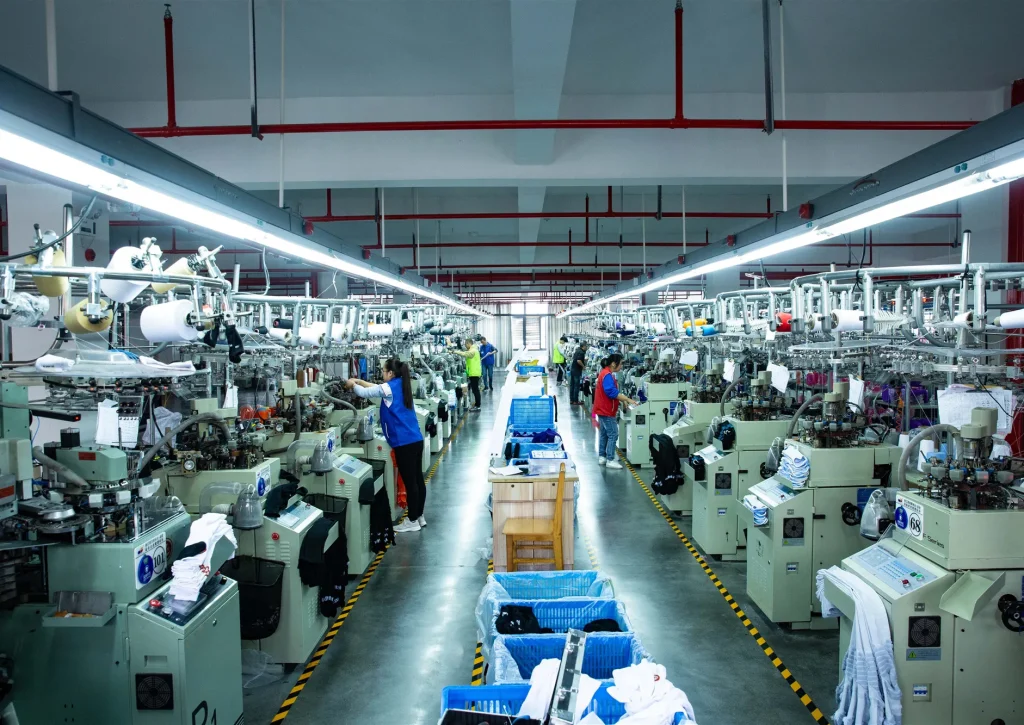Hospital sock colors meaning — quick answer: there’s no universal U.S. standard for color-coded patient socks. Yellow hospital socks are commonly used to flag fall risk, while red/blue/green vary by hospital (sometimes risk tiers, sometimes sizes). Always follow your facility’s policy. Below, we explain how grippy socks prevent falls, what different colors often indicate, and how to source non-slip socks for at-risk patients.
Introduction: The Critical Role of Non-Slip Socks in Fall Prevention and Patient Safety.

In any healthcare setting, reducing preventable harm is non-negotiable. Hospital non-slip socks—also called grippy socks, non-skid socks, or fall prevention socks—are a simple, low-cost intervention that helps patients keep stable on smooth floors during ambulation, transfers, and bedside activities. For facilities, the right sock program supports safer care, smoother workflows, and better patient experience.
Understanding the Risks: Why Slips and Falls Are a Major Concern.

Slips and falls are a leading cause of injury among hospital patients, especially the elderly or those with mobility issues. According to AHRQ, each year, somewhere between 700,000 and 1,000,000 people fall in U.S. hospitals. The hospital environment presents numerous fall hazards: unfamiliar surroundings, smooth floors, medical equipment, and the effects of medication or illness. Proactive fall prevention strategies are essential, and the use of non-slip footwear is a foundational, non-invasive safety measure. The AHRQ Fall TIPS toolkit shows that structured risk assessment and tailored interventions reduce falls by up to 25%.
| Risk Factor | Impact |
| Unfamiliar surroundings | Disorientation and missteps |
| Smooth, polished floors | Increased slip potential |
| Medication side effects | Dizziness or impaired coordination |
| Mobility impairments | Higher susceptibility to balance loss |
Defining Features: What Are Hospital Non-Slip Socks?

Hospital non-slip socks are specifically designed to provide superior traction on surfaces commonly found in healthcare settings. Though known by many names—including hospital grippy socks, fall prevention socks, or slipper socks—their core function is consistent: maximum grip.
Their defining feature is the presence of gripper treads on the sole, typically made from a rubberized or silicone-based material. A rapid review in the International Journal for Quality in Health Care highlights that while non-slip socks have promise, evidence is still limited. This creates essential friction against smooth floors. Max Hosiery ensures its patient safety socks meet critical criteria: effective, durable treads, and comfortable materials.
💡 Professional Insight: Are hospital socks compression socks? Generally, no. Hospital non-slip socks are primarily focused on fall prevention. While some patients require medical compression, these two types of socks serve distinct therapeutic purposes.
Decoding the Protocol: Hospital Sock Colors, Meaning, and Fall Risk

For procurement managers and clinical leaders, incorporating color-coded socks in hospital settings is a best practice for standardized safety. As noted in facility guidelines, non-slip socks support but do not replace safe, fitted footwear. This system transforms the sock into an immediate visual cue for staff, enhancing awareness and promoting timely intervention, which is critical for patient safety. Falls with injury can increase costs by tens of thousands per incident — emphasizing the business case for quality non-slip socks.
Here is a detailed breakdown of the standard protocols, keeping in mind that the exact hospital sock color code should always align with a facility’s specific policy:
1. Red Hospital Socks (Highest Risk Alert)
- Meaning: Red universally signifies the Highest Fall Risk.
- Protocol: Patients wearing red hospital socks, meaning they should not attempt to mobilize without the direct and immediate assistance of staff. This color is an urgent warning, often reserved for patients with severe cognitive impairment or acute mobility challenges.
2. Yellow Grippy Socks (Moderate to High Risk Caution)
- Meaning: Yellow indicates a Moderate to High Fall Risk or the need for constant caution.
- Protocol: Patients in yellow grippy socks require consistent monitoring and typically need staff supervision when moving. The bright color functions as a highly visible “caution sign,” ensuring extra vigilance from the entire care team.
3. Blue, Green, or Tan Socks (Standard Risk / Sizing)
- Meaning: These colors typically denote a Standard Fall Risk patient, or in many instances, are simply used to color-code by size (e.g., blue for medium, tan for large).
- Protocol: While these patients do not carry the acute risk of red or yellow groups, the socks still provide essential traction. Consulting the facility’s specific guidelines is crucial to confirm whether the color signifies risk or size.
The Science of Grip and Durability

The effectiveness of non-slip socks depends on the science behind the grip material and application. The treads must have a high coefficient of friction to adhere effectively to tile, linoleum, and polished wood.
Why do hospital socks have grip on both sides? Many high-quality medical socks, including those from Max Hosiery, feature dual-sided grips. For example, a prospective study at a major academic center found zero falls among patients in the ‘Smart Socks’ intervention group. This design ensures safety remains constant even if the sock twists on the foot, or if a patient inadvertently puts them on inside-out. This redundancy is a key B2B quality indicator.
The grip material must also be durable enough to withstand industrial-grade laundering without peeling or degrading, guaranteeing long-lasting performance—a vital factor for bulk procurement.
FAQs
Do non-slip hospital socks actually prevent falls?
They help reduce slip-related incidents, but only as part of a broader, patient-specific fall-prevention plan. Programs like AHRQ’s Fall TIPS show meaningful fall reduction when socks are combined with risk assessment, education, and environmental controls. Treat socks as one element in a multi-factor protocol, not a silver bullet.
What do yellow hospital socks mean?
There’s no national mandate, but many hospitals use yellow socks (often alongside yellow wristbands/gowns) to flag fall risk at a glance. It’s a visual cue to prompt assistance and precautions during ambulation and transfers. Always defer to your facility’s written policy.
Is there a universal code for hospital sock colors?
No. Color use is set locally, so meanings vary by hospital or health system; suppliers even offer color-coded “fall risk kits” to match facility protocols. When sourcing, align colors with the specific policy your hospital follows.
Why do some socks have grips on both sides?
That’s a double-tread design, so traction remains even if the sock rotates during bed mobility or while walking. It reduces the “wrong-side up” failure mode common with single-tread socks. Many hospital lines offer double-tread options for this reason.
Are hospital socks the same as compression socks?
No. Non-slip patient socks are traction footwear for fall prevention, whereas compression socks are a clinical garment to improve venous return and manage edema. Some patients may be issued both, but they serve different purposes.
Max Hosiery’s Commitment: A Partner in B2B Safety Supply.

Max Hosiery’s focus is on manufacturing products that healthcare professionals can trust. We understand the high standards of hospital procurement, where quality, compliance, and cost-efficiency are equally important.
Wholesale & Customization: Your Procurement Advantage
For healthcare networks and major distributors, partnering with a dedicated manufacturer offers distinct benefits:
- Bulk Cost Efficiency: Purchasing bulk hospital socks directly significantly reduces per-unit costs and ensures a ready supply chain.
- Customization for Protocol: We specialize in providing custom hospital socks in specific colors, allowing facilities to seamlessly match their products to their established color-coded safety systems (e.g., the precise shade for red hospital socks meaning).
- Specialized Products: We ensure availability of hard-to-source items like bariatric non-slip socks and appropriate non-slip socks for elderly patients, all manufactured to clinical standards.
Color draws attention, and grip, fit, and compliance prevent falls. Build your protocol around a reliable Double-sided Tread Hospital Socks with Grippers with the right size range, then align any color-coding to your facility policy. For bulk and custom options that match your program, our team can help standardize specifications across units.
